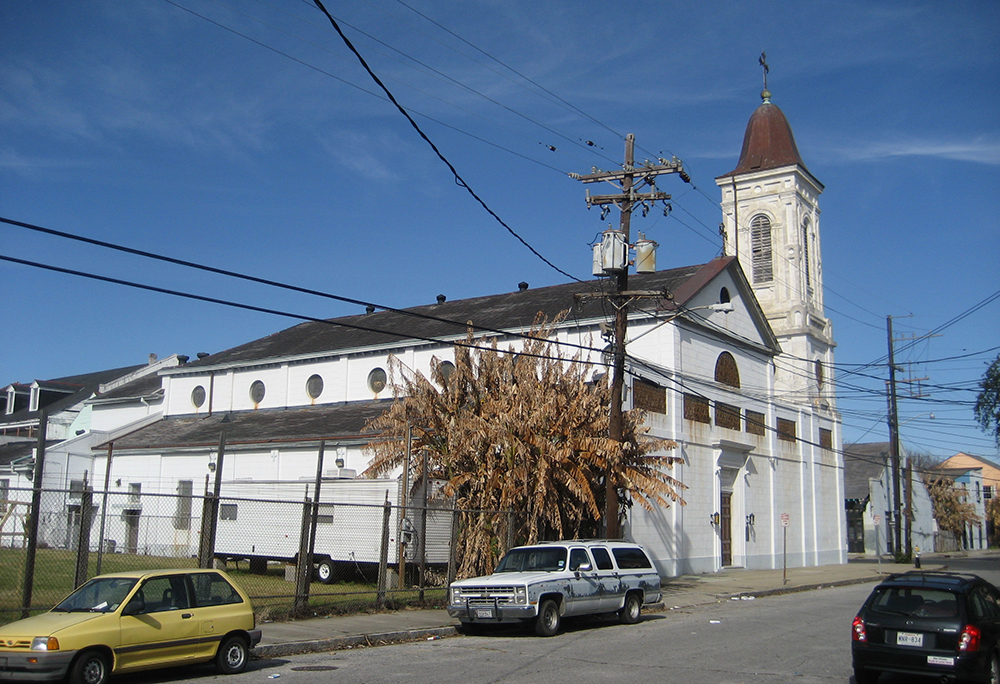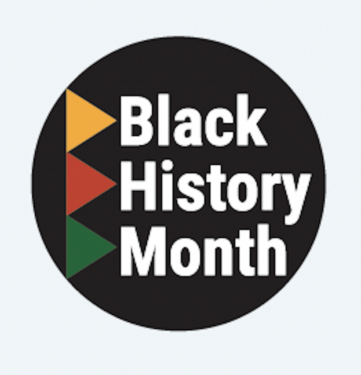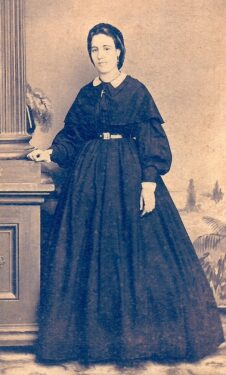
PROSPECT HEIGHTS — Just north of New Orleans’ French Quarter — on soil once worked by enslaved people — stands a Catholic church believed to be the oldest black parish in the U.S.
St. Augustine Church was established in 1841 when free people of color — black people who purchased their freedom — petitioned for their own parish.
Since then, it has been a sanctuary in the turbulence of emancipation, the rise and fall of Jim Crow laws, the civil rights movement, but also natural disasters like Hurricane Katrina in 2005.
Still, St. Augustine’s parishioners proudly declare their church has always welcomed people of every race to worship God in their common faith, often to the soundtracks of African American spirituals and Dixieland jazz.
 “It’s amazing to think about,” said Father Emmanuel Mulenga, who was pastor there for nearly a decade. “What I have found at St. Augustine is that the white folks could’ve chosen to go anywhere.”
“It’s amazing to think about,” said Father Emmanuel Mulenga, who was pastor there for nearly a decade. “What I have found at St. Augustine is that the white folks could’ve chosen to go anywhere.”
He said they might pass two or more Catholic churches while driving to St. Augustine, where the Mass might go past 90 minutes.
“I think, regardless of how turbulent the times, somehow the fact is that, every Sunday, there is a feeling of being in church together,” he said.
Father Mulenga, who is from Zambia, celebrated his last Mass as pastor on Feb. 12.
He is now on the administrative council of his congregation — the U.S. Missionary Oblates of Mary Immaculate, based in Washington D.C.
Father Mulenga told The Tablet that the church occupies the former site of a plantation where slaves lived, worked, and died hundreds of years ago.
The surrounding neighborhood is called Tremé because plantation owner Claude Tremé sold the land in real estate deals.

Slaves had no hope of gaining their own Catholic church until the freed people organized in the 1830s. In 1841, they successfully petitioned then-Bishop Antoine Blanc to build a church.
The Ursuline Sisters bought some of the Tremé plantation for the project, but on the condition that it be named for St. Augustine of Hippo, one of their patron saints.
Father Mulenga said that back then, local white Catholics may have chosen to worship there out of convenience.
“But,” he added, “the seating arrangement was different.”
Congregants in the new church reserved pews for their families a few months before the official dedication in October 1842 by donating to the parish.
This sparked the so-called “War of the Pews,” in which freed people and white Catholics tried to outdo each other in seating purchases.
The free people won the competition by a 3-to-1 purchasing margin, including all the side pews.
Those seats were given to enslaved people, thus creating what has been called the most integrated U.S. congregation of that time.

Delille went on to create the Sisters of the Holy Family, the second-oldest African American congregation of women after Mother Mary Lange’s Oblate Sisters of Providence.
“Mother Henriette” would spend the next 20 years helping enslaved people, educating orphan girls, and caring for the sick and the elderly.
Mothers Delille and Lange are among black people from the U.S. under consideration for canonization. The first selected will be the first African American saint.
Another notable parishioner was shoemaker Homer Plessy who became the plaintiff in the landmark 1896 Supreme Court case, Plessy v. Ferguson. He sued to challenge Jim Crow segregation laws.
New Orleans faced a naval blockade and was occupied by Union troops during the Civil War, but avoided major destruction.
Emancipation was followed by Reconstruction and Jim Crow. It took another 100 years and the civil rights movement before legalized segregation dissolved.
Still, the heritage of St. Augustine, with its original congregation including slaves, is not lost on modern-day parishioners.
In 2004 they repurposed garden space for the Tomb of the Unknown Slave. Its monument is in the shape of a cross and made of chains with dangling shackles.
The location of the church also makes it a fine venue for community groups to meet, plus after school programs for neighborhood kids, even if their families don’t worship there, Father Mulenga said.
St. Augustine is a short distance from a bend in the Mississippi River, but on ground higher than the French Quarter and the rest of Tremé. Thus, it was spared from Hurricane Katrina’s flood waters in 2005.
But Katrina’s damaging winds inflicted severe damage on the old building, Father Mulenga said.
Meanwhile, parishioners who lived on surrounding streets mostly rented and were displaced by the storm.
Consequently, St. Augustine’s congregation shrunk, and so did the corresponding financial support from displaced parishioners.
The parish was hit again in 2021 by Hurricane Ida. Now as its 200th anniversary approaches, the historic church still needs extensive renovations.
The pandemic hampered fundraising, but the development team is working to regain momentum, Father Mulenga said.
A few years ago, the archdiocese considered closing the parish.
Officials shelved the plan after parishioners and other community members vigorously objected — a testament to St. Augustine’s importance to the community.
Still, Father Mulenga believes the parish will succeed — it must.
“Beyond the times of turbulence, and beyond the Catholic community, let me say that St. Augustine has always been a community center,” Father Mulenga said. “It is a value to peace around the community.”
